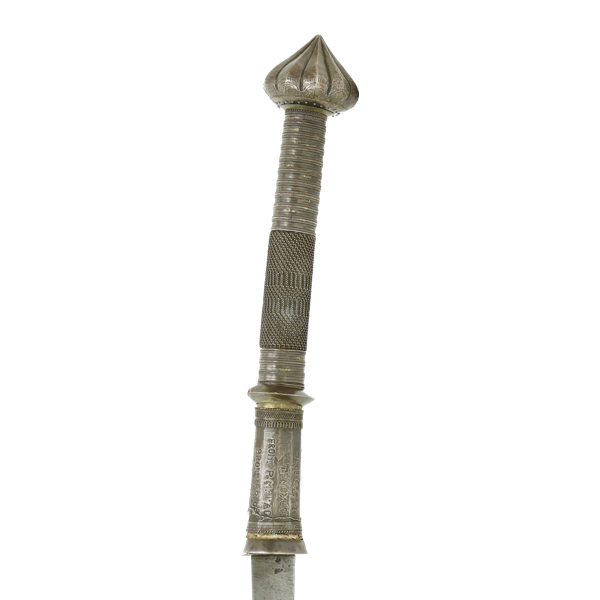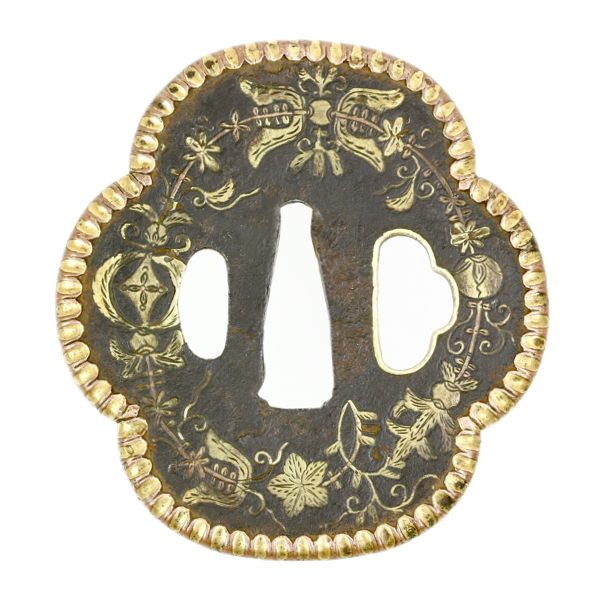
A Korean sword guard
Adjusted for use on a Japanese sword.
Dāo fēng (刀鋒)
The point of a blade.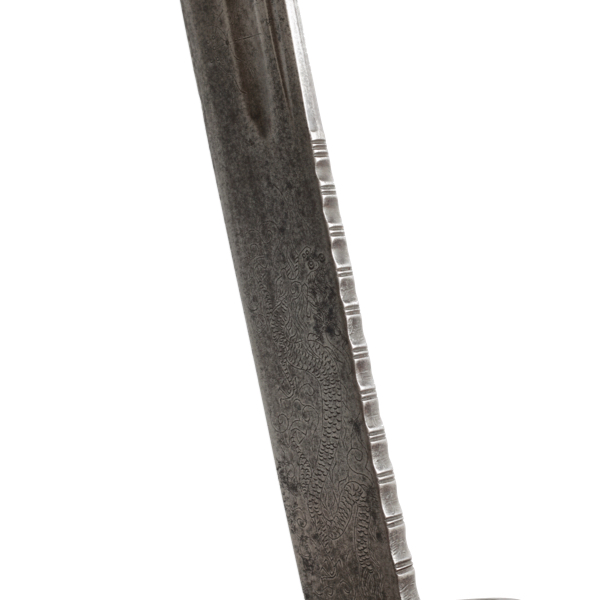
Dāo bèi (刀背)
Qing Chinese for the back of a blade.
Yāodāo xìzi (腰刀繫子)
Qing Chinese for saber lanyard.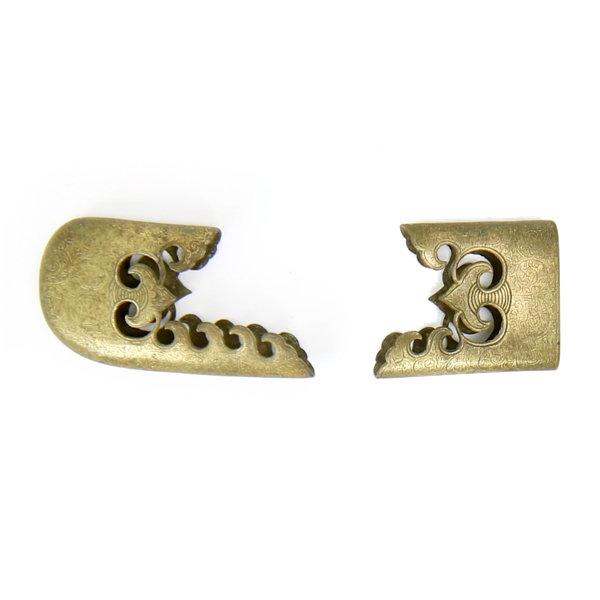
Dāoqiào dǐshù (刀鞘底束)
Qing Chinese for the two mounts on either end of a saber scabbard.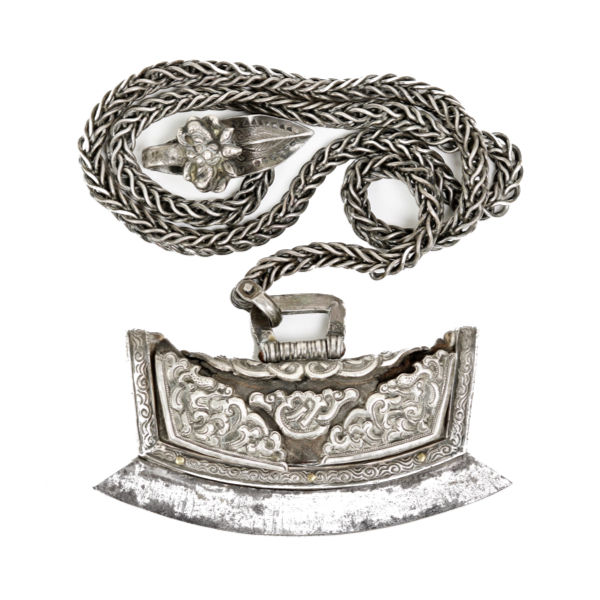
Huǒ lián bāo (火䥥包)
A traditional fire-making pouch.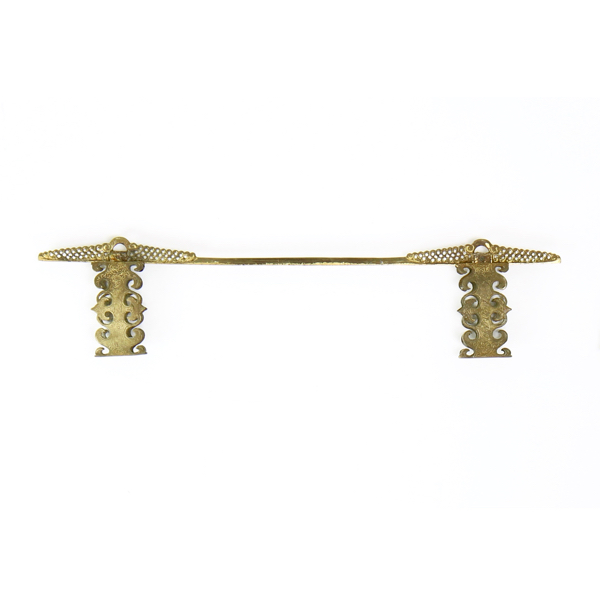
Dāo shù liáng (刀束樑)
Language: Mandarin Chinese
Source: Classical literature
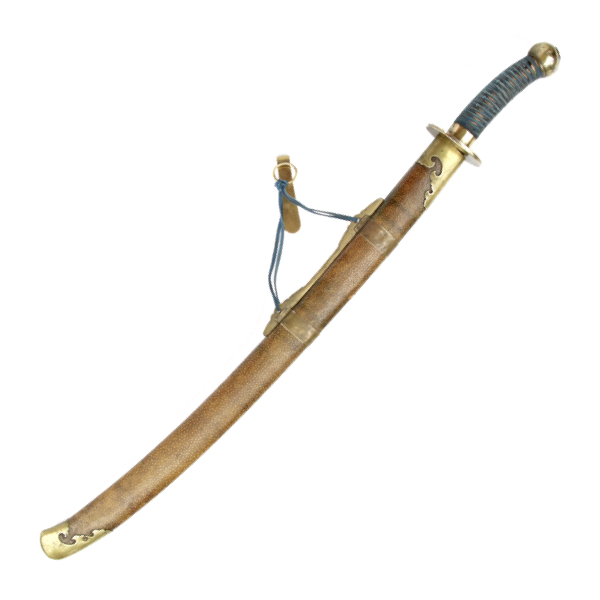
Yāodāo (腰刀)
Literally "waist saber", the standard military saber of the Qing.
Sǔn (榫)
Language: Mandarin Chinese
Source: Classical literature

Tóngjiǎn (銅鐧)
Chinese for a bronze mace.
Dāo rèn bēng (刀刃崩)
Qing Chinese for edge damage on a saber blade.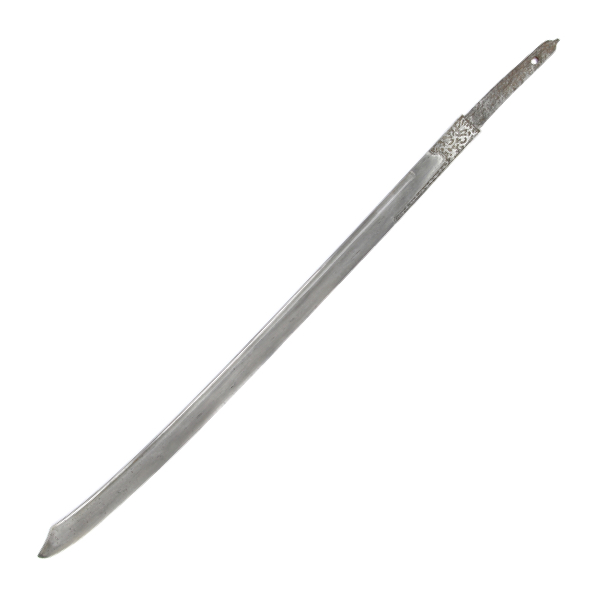
Dāo rèn (刀刃)
Qing Chinese for saber edge / saber blade.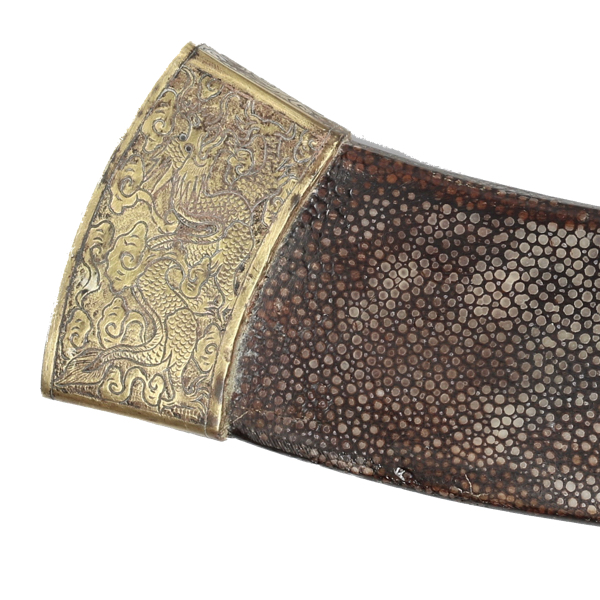
Dāo dǐ gū (刀底箍)
Qing Chinese for a saber scabbard endpiece.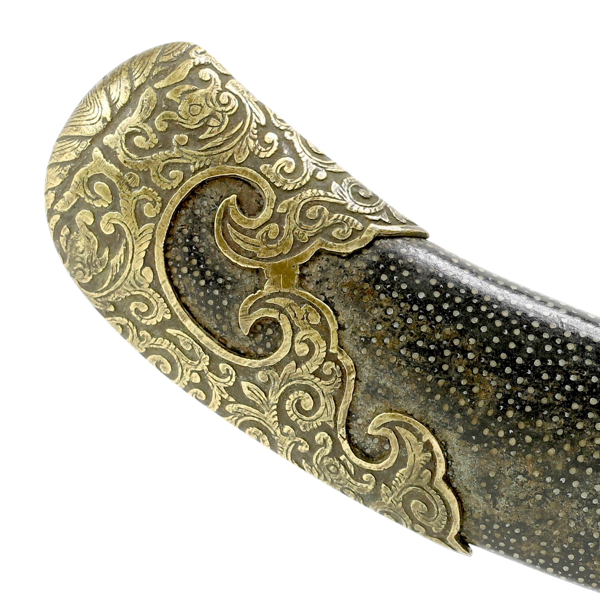
Dāo dǐ yún (刀底雲)
Qing Chinese for a specific type of scabbard endpiece.
Dāo qiào dǐ shù (刀鞘底束)
Qing Chinese for saber scabbard endpiece.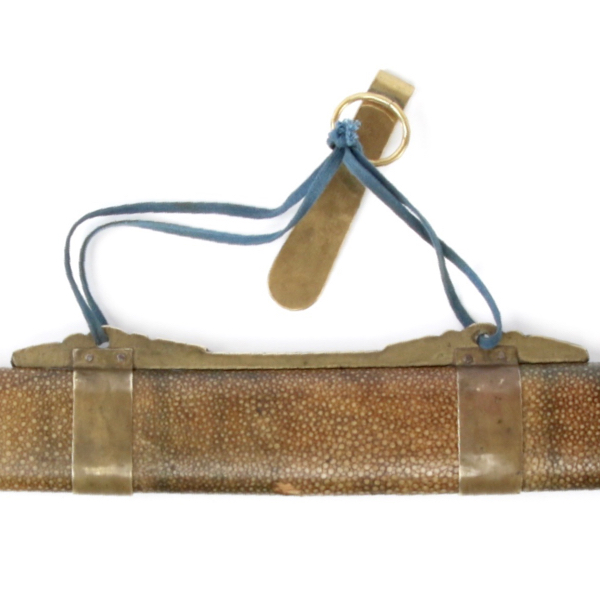
Dāo liáng (刀梁)
Qing Chinese for the suspension bar on a saber scabbard.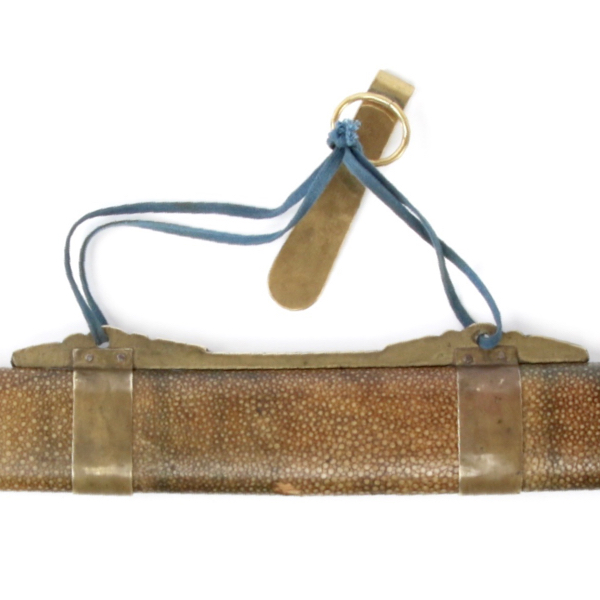
Qiàoshàng shuāngyǎn shù (鞘上雙眼束)
Qing Chinese for the suspension bar on a scabbard.
Dāo shùliáng (刀束樑)
Qing Chinese for the suspension bar on a saber scabbard.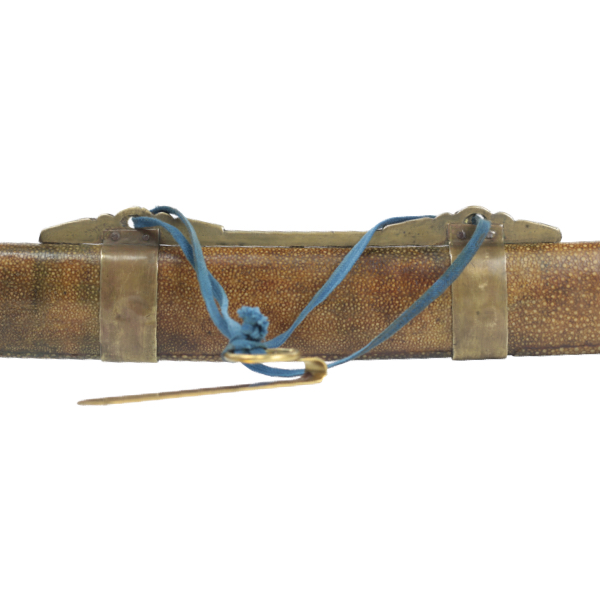
Dāoqiào zhōngshù (刀鞘中束)
Qing Chinese for "saber suspension bands".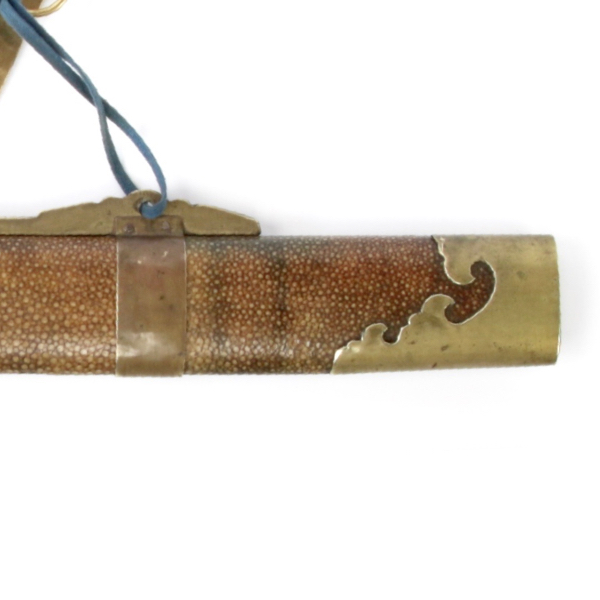
Dāoqiào shù (刀鞘束)
Qing Chinese for saber scabbard mounts.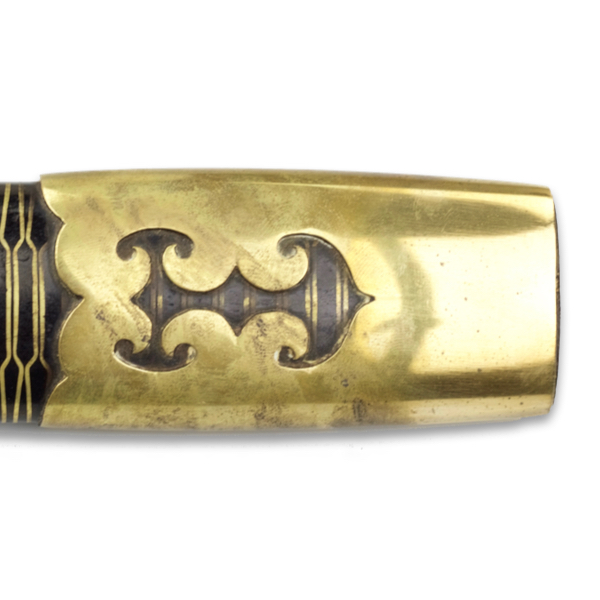
Qiào kǒugū (鞘口箍)
Qing Chinese for the mouthpiece of a scabbard.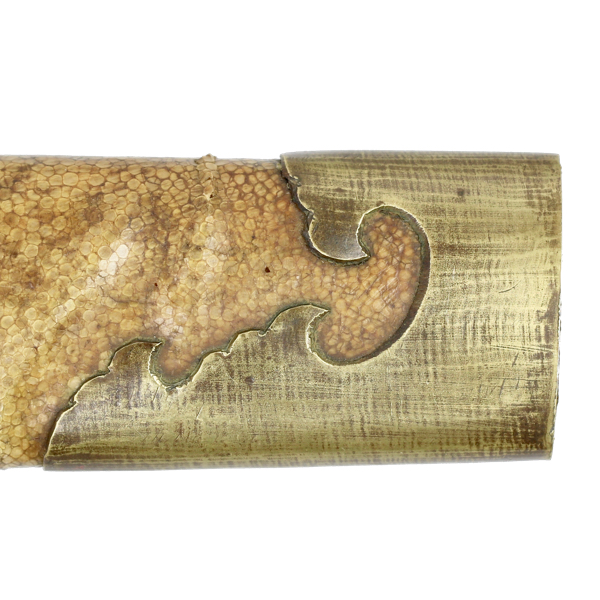
Dāoqiào kǒugū (刀鞘口箍)
Qing Chinese for the mouthpiece of a saber scabbard.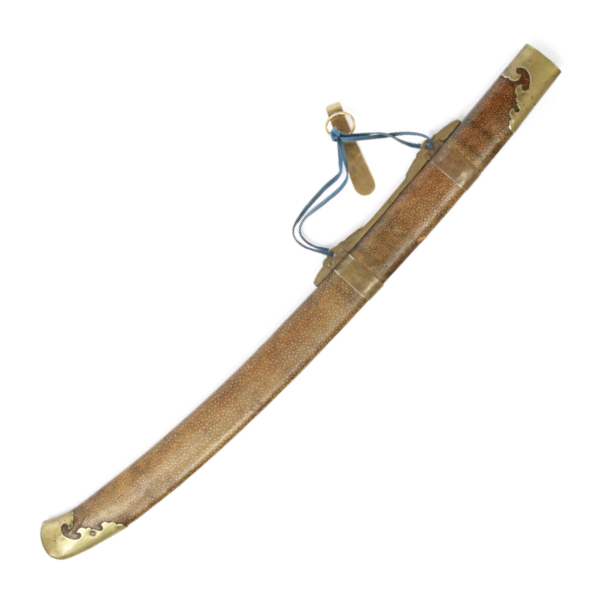
Dāoqiào (刀鞘)
Qing Chinese for "saber scabbard".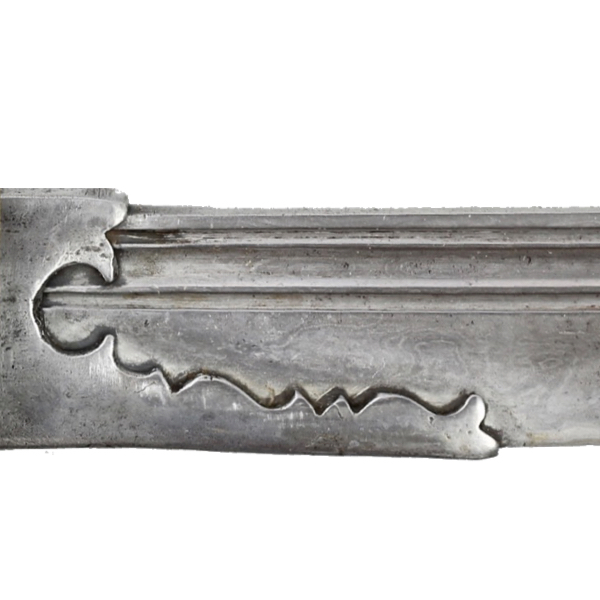
Ulhun
Manchu for tūnkǒu (吞口), a collar piece on the base of a sword or saber blade.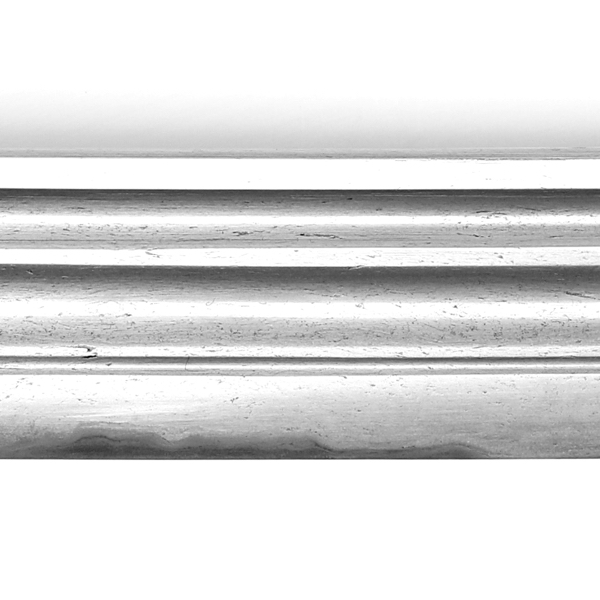
Kuhen
Machu for a groove on a blade or arrowhead
Dāo cáo (刀槽)
Qing Chinese for a groove in a saber blade.
Dāo tūnkǒu (刀吞口)
Qing Chinese term for the collar-piece found on some Chinese sabers.
Hùshǒu pán (護手盤)
Qing Chinese word for a disc guard.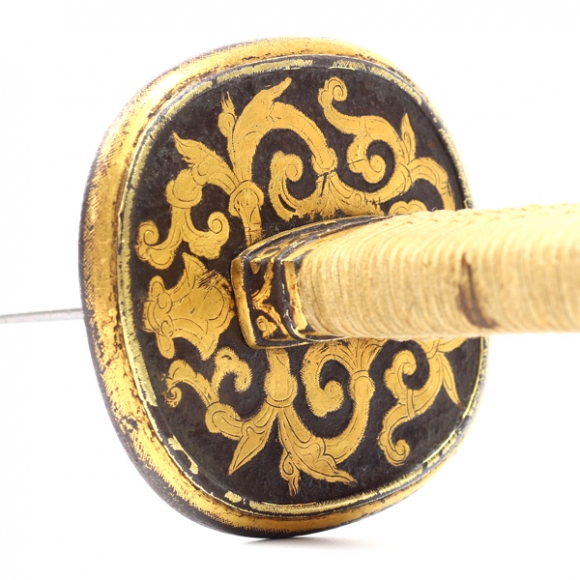
Dāo hūshǒu (刀護手)
Qing Chinese for "saber guard".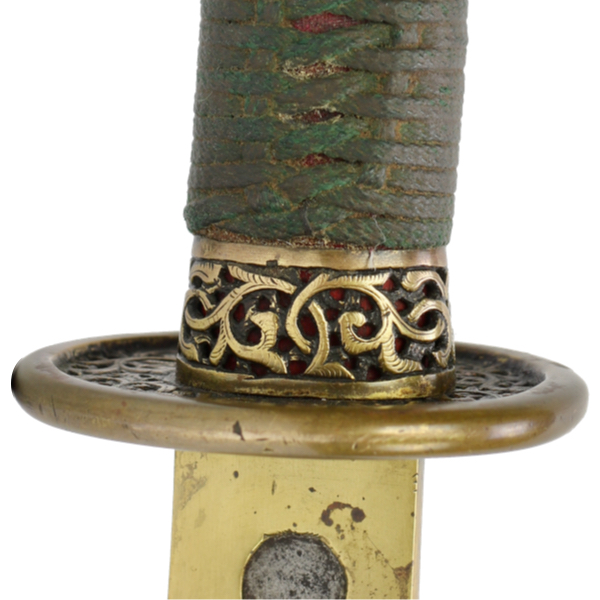
Bǎgū (靶箍)
Qing Chinese for the ferrule of a sword hilt.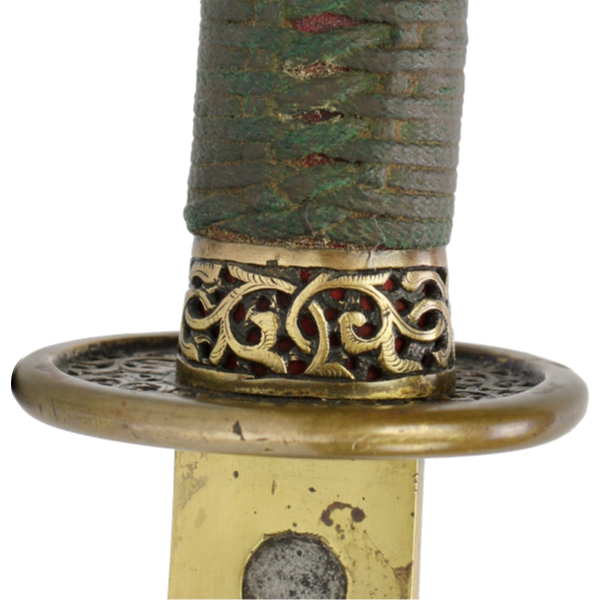
Dāobǎ shù (刀把束)
Qing Chinese for the ferrule of a saber hilt.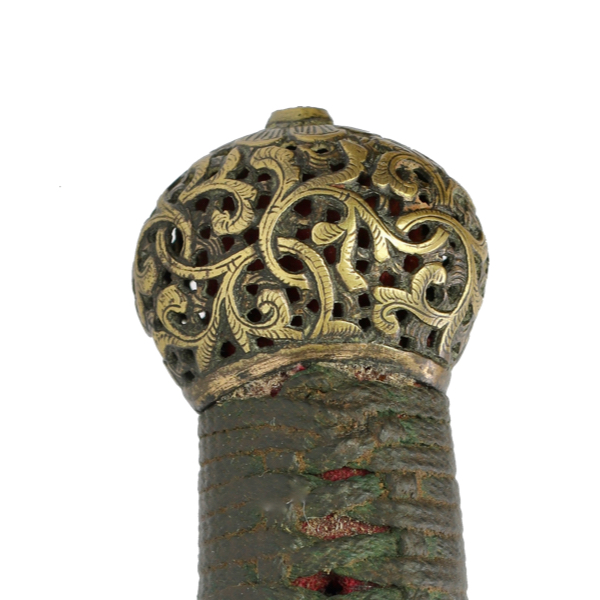
Dāobǎ dǐngshù (刀把頂束)
Qing Chinese for "saber pommel".
Dāobǎ (刀把 / 刀把)
Qing Chinese for "saber grip".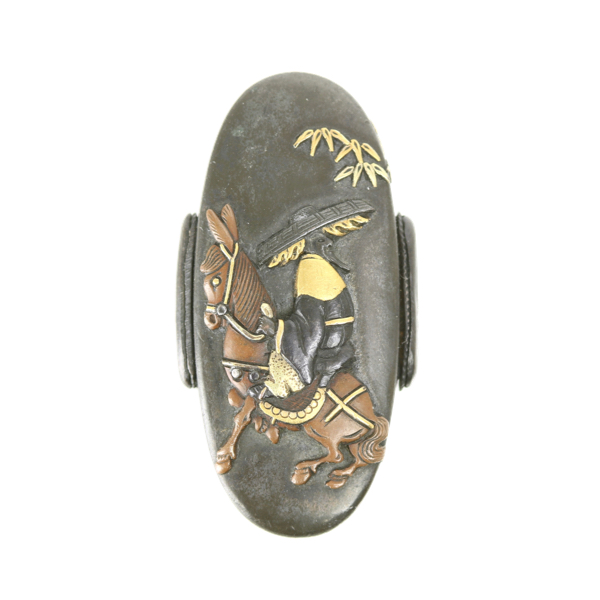
Shibuichi (四分一)
A copper-silver alloy used to make Japanese sword mounts.
Fuchi kashira by Hisayuki
A beautiful signed Japanese ferrule and pommel plate.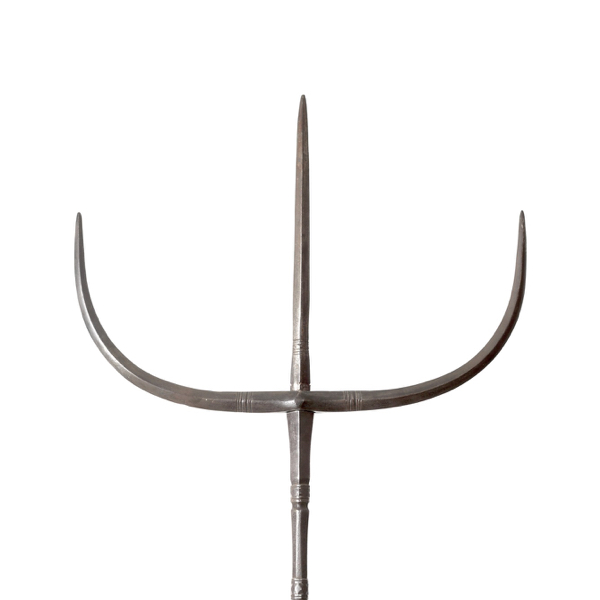
Hǔchā (虎叉)
The Chinese tiger fork.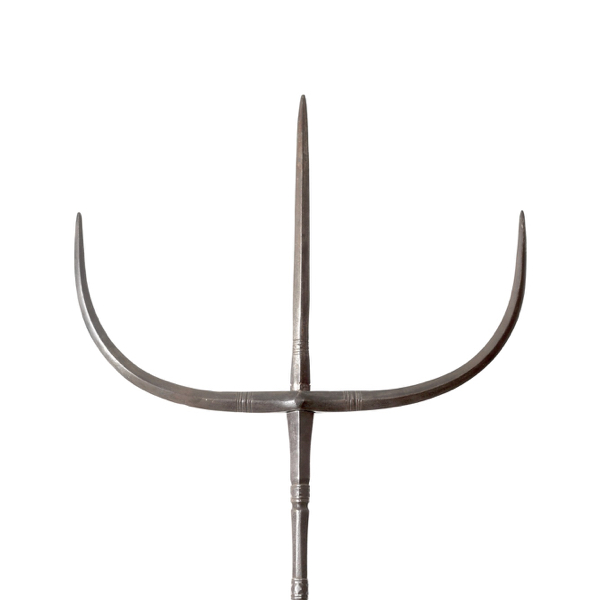
Tiger fork
Chinese "tiger forks" or hǔchā (虎叉) are one of the classic weapons in Chinese martial arts.
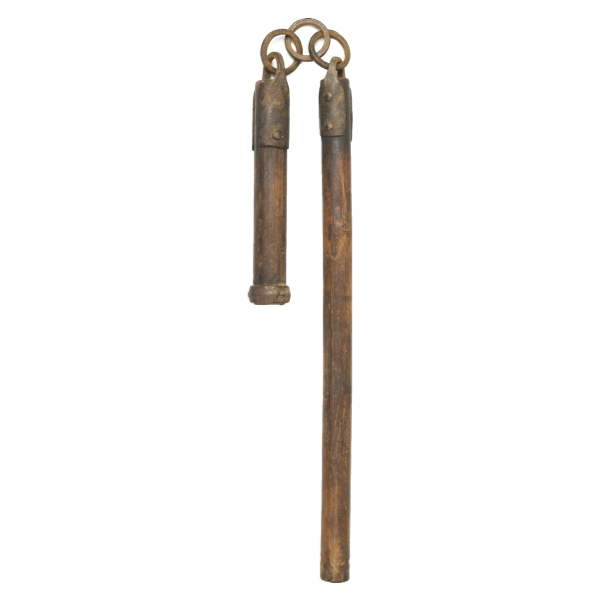
Liánjiābàng (連耞棒)
A Chinese type of fighting flail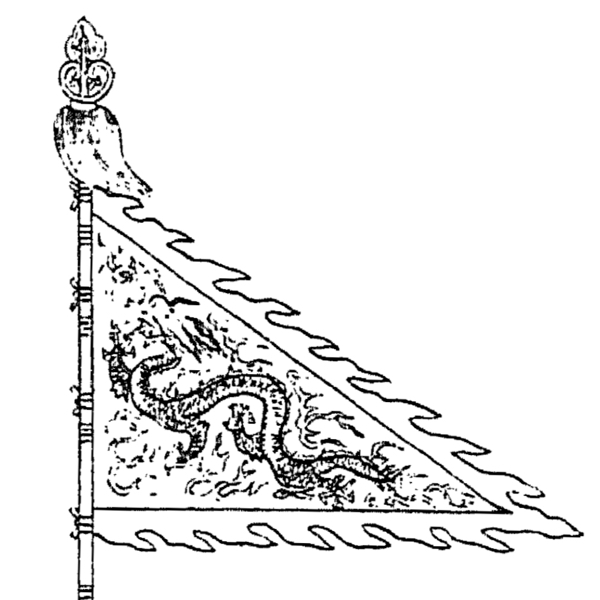
Hànjūn (漢軍)
A hereditary Chinese warrior class who served the Qing under the Chinese Eight Banners.
Yǎnyuèdāo (偃月刀)
"Reclining moon blade", an iconic Chinese polearm.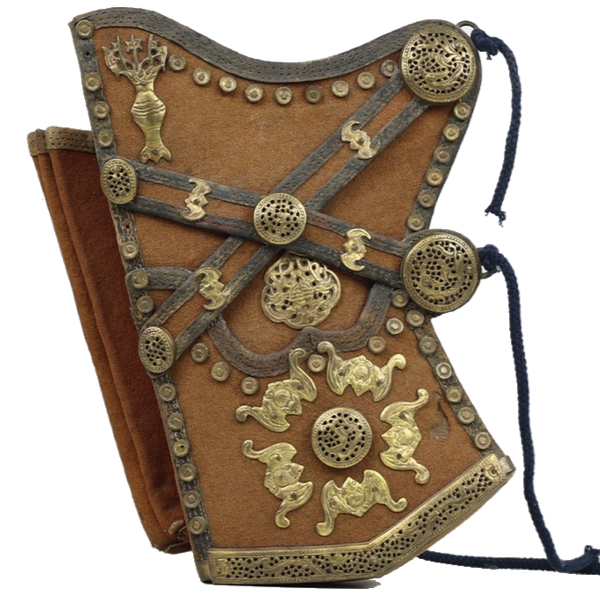
Sādài (撒袋)
Chinese name for the Manchu style quiver.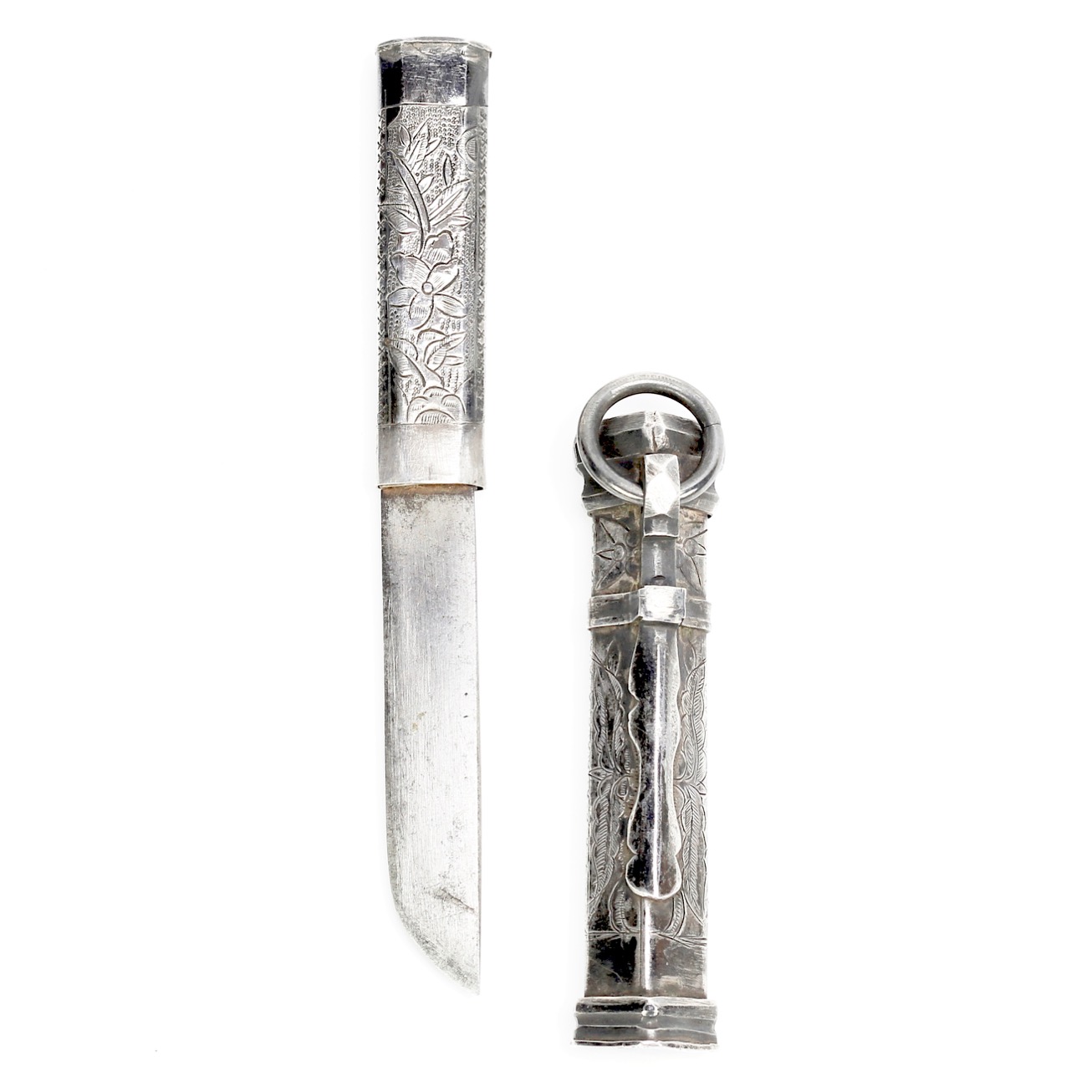
Eunjangdo
Literally "silver knife". Korean knives worn by upper class women in Joseon society.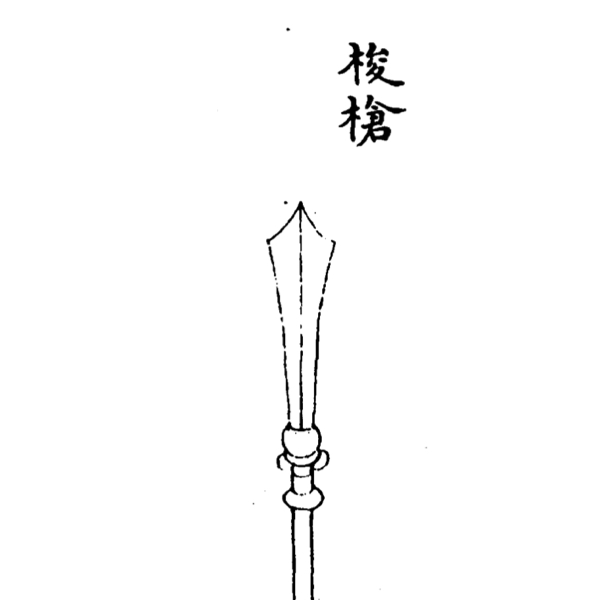
Suōbiāo (梭鏢)
A Chinese type of javelin.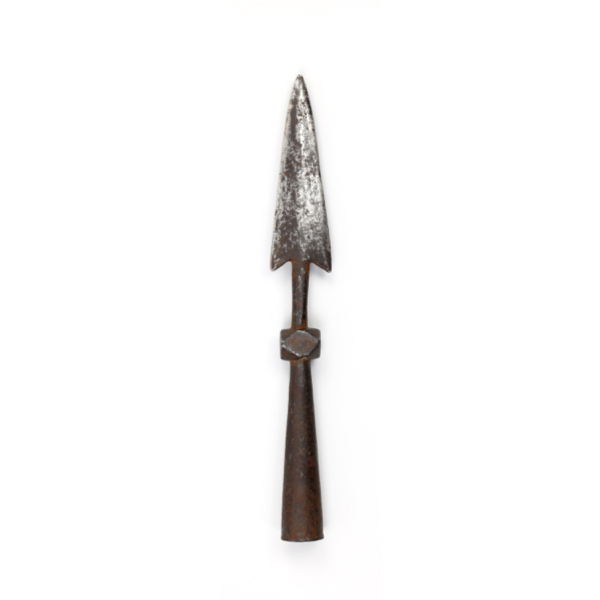
Biāo (鏢)
A Chinese javelin.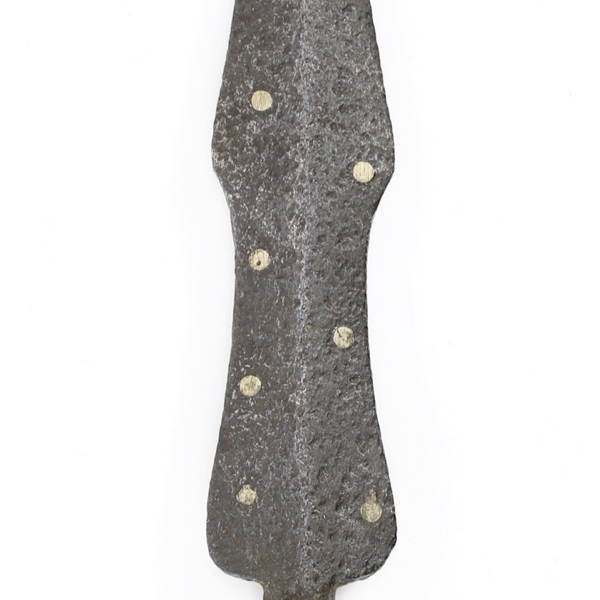
Běidǒu (北斗)
The Seven Stars of the "the Big Dipper". An important constellation in traditional Chinese philosophy and religion.
Tibetan style pierced saddle plate
With designs of four dragons in scrollwork around a "wish-granting-jewel"
17th century armored vest
An extremely rare sleeveless vest from the Ming-Qing transition period.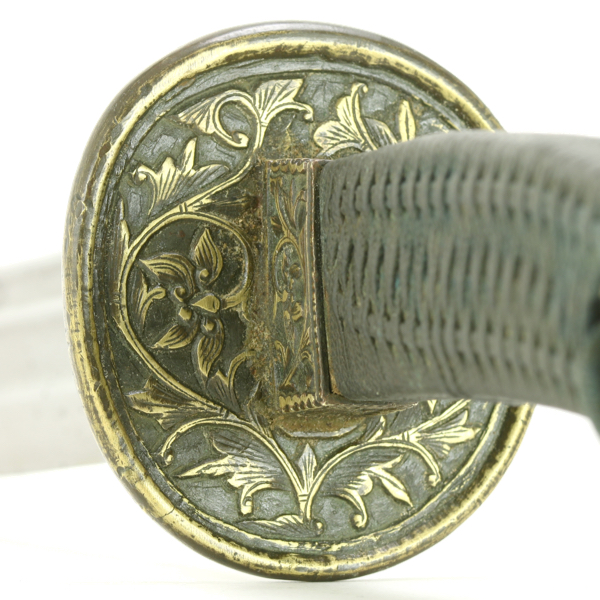
Fangshi officer's saber
With a good blade and a set of fittings that exceed the quality of most of this period.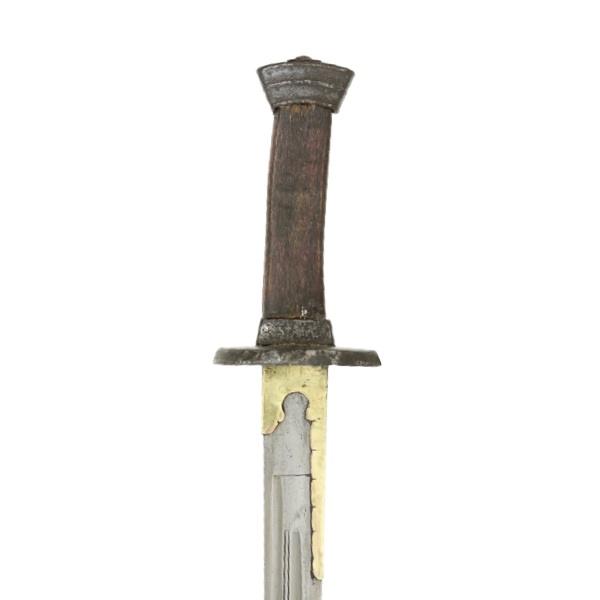
Early yútóudāo
With influences from several cultures that are rarely seen on a single blade.